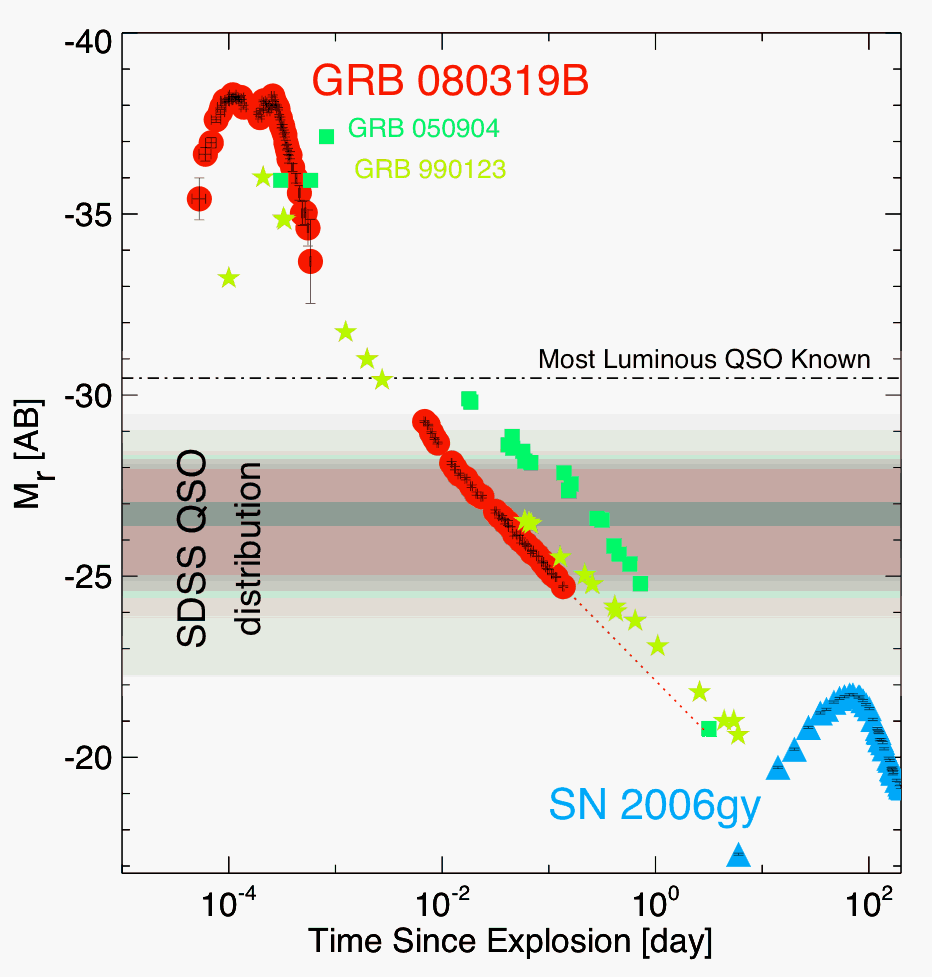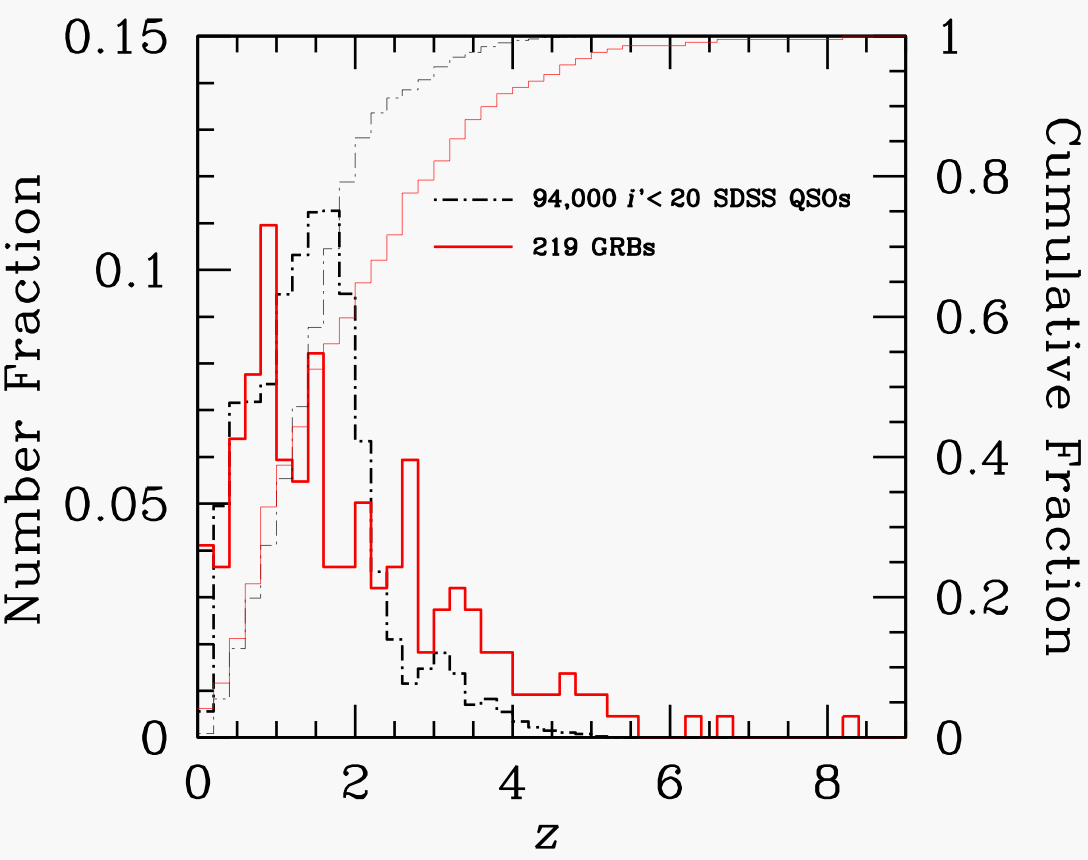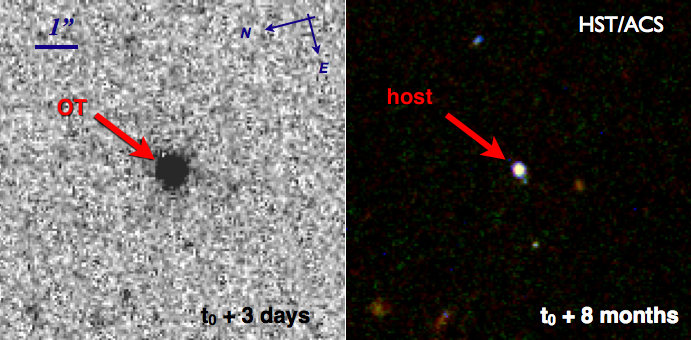Gamma-ray bursts (GRB) are among the most energetic events observed in the universe at all epochs. In particular, long-duration GRBs are believed to originate in the catastrophic death of massive stars. Many GRBs are followed by optical afterglows that can peak as high as V ~ 5 magnitude, M(r) ~ -38 magnitude in the restframe (see the right panel), soon after the GRB and fade away quickly with time following a power-law model. Similar to high-redshift quasars (QSOs), GRB afterglows can serve as a sensitive probe of intervening gas that is either local or external to the burst progenitor environments. Since GRB afterglows rapidly decline, however, an effective exploitation of these lighthouses requires rapid follow-up spectroscopy (t < 2 day) even with 8 m-class telescopes.

Bloom+09

